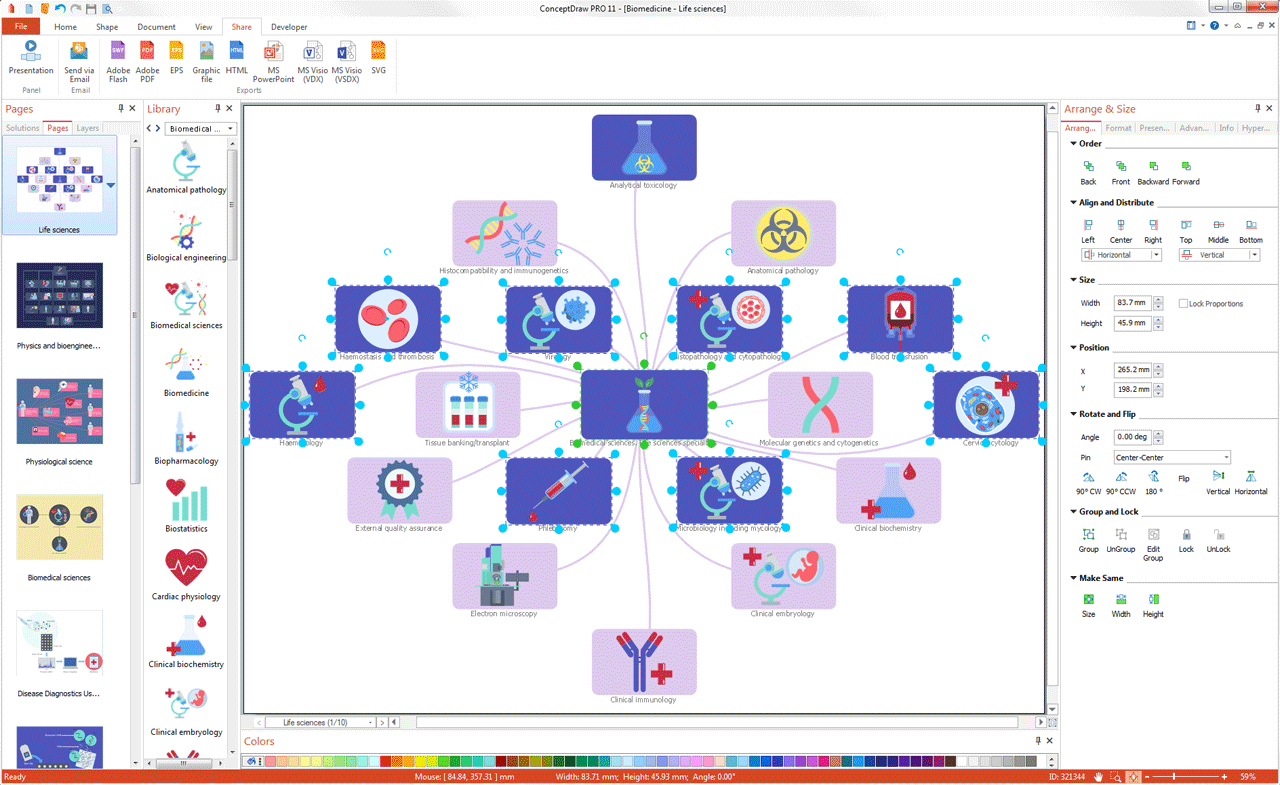Biomedical Technology
Biomedical technology refers to the application of technology and engineering principles to the biological systems. Such terms as "biotechnology" can be referred to the environmental, agricultural or medical application. Biomedical technology involves biomedical science, informatics, research, bioengineering, biotechnology and biomedical engineering.
Biomedical engineering, same as Biotechnology, may be also called as Biomedical Technology or Bioengineering (bio-engineering, biological engineering). It includes biological systems engineering, being the application of methods and concepts of biology. It aims to solve the real-world problems that can be related to any of the life sciences. Using engineering's own synthetic and analytical methodologies as well as its traditional sensitivity to the practicality and cost of the solutions arrived at, biological engineering mainly uses the rapidly developing body of knowledge. Such body of knowledge is known to be called as “molecular biology” aiming to advance the previously studied applications of organisms.
Biomedical Technology illustrations with ConceptDraw DIAGRAM
Biomedical technologies include biologically engineering machines and relatively recently invented 3D printers. The idea of a medical use for the mentioned biological machines that can be introduced into the body in order to detect or repair some infections and/or damages was invented by Feynman (together with Albert Hibbs) as he suggested using them in his essay “There's Plenty of Room at the Bottom” in 1959.
The so-called industrial bioengineering extends from the creation of artificial organs by technical means. It is aimed to find the ways of growing tissues or organs by using the methods of regenerative medicine in order to compensate either lost or reduced physiological functions. It may be also used for developing the genetically modified organisms, such as animals and agricultural plants. This kind of bioengineering is known to be closely related to nanotechnology, 3D printing, and biotechnology.
Another branch of biological engineering is biomimetics. It strives to find ways in which both functions and structures of living organisms can be used as models for the engineering and design of machines and materials. Systems biology seeks to exploit the engineer's familiarity with complex artificial systems as well as the concepts used in so-called "reverse engineering". It may be also used for facilitating the difficult process of recognition of the function, structure and precise method of operation of complex biological systems.
There is a differentiation between biomedical engineering and biological engineering which may seem to be unclear. Biomedical engineers are known to be more focused on applying biological as well as other sciences toward medical innovations. At the same time, biological engineers are mainly focused on applying engineering principles to biology.
Health informatics as another part of biomedical technology can be also called as healthcare informatics, medical informatics, healthcare informatics, nursing informatics, biomedical informatics or clinical informatics. It is simply informatics in healthcare aimed to manage and use patients’ healthcare information. biomedical informatics uses health information technology for improving healthcare via any combination of higher quality, new opportunities, and higher efficiency. It includes computer science, information science, social science, management science, behavioural science, etc.
Health informatics may be also defined as the interdisciplinary study of the development, design, adoption, and application of innovations based on IT in healthcare services management, planning and delivery. It deals with the devices, methods, and resources that are required to optimize the acquisition, retrieval, use and storage of information in biomedicine and health.
Health informatics tools are clinical guidelines, formal medical terminologies, computers and also communication and information systems. It can be applied to the areas of clinical medicine, nursing, dentistry, public health, pharmacy, occupational therapy, biomedical research, alternative medicine and physical therapy. All mentioned are designed to improve the overall of the effectiveness of patients’ care delivery, ensuring that the generated data is the one of a high quality.
Biomedical technologies are known to be cloning and therapeutic cloning. Cloning as a term in biology is the process of producing similar populations of genetically identical individuals that occurs in nature. It may be performed when organisms (e.g., insects, bacteria, animals or plants) reproduce asexually. Cloning in biotechnology may be referred to processes that are used for creating the copies of DNA fragments, cells or organisms (known as “organism cloning”). This term may be also referred to the production of copies of a product, such as digital media or software.

Biomedical Technology illustrations with ConceptDraw DIAGRAM
Talking about software, one of the best diagramming and drawing ones is ConceptDraw DIAGRAM nowadays. Having the mentioned tool anyone can create the needed drawings, including the biomedical ones, within a short period of time as long as the appropriate solution is downloaded and installed. Having the Biomedicine solution that extends the ConceptDraw DIAGRAM vector diagramming application with the pre-made samples and stencil libraries can help to complete the tasks on time even though you have no experience in making the needed illustrations.
Choosing any needed from 137 vector graphics icons from the Biomedicine solution may simplify the work of creating the great looking as well as smart and professional looking drawings within only a few minutes. Being based on the already previously created examples of the biomedical-related drawings, any ConceptDraw DIAGRAM user can make the unique ones getting a smart looking result.



